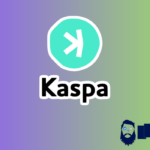Today, enjoy the 0xResearch newsletter on Blockworks.co. Tomorrow, get the news delivered directly to your inbox. Subscribe to the 0xResearch newsletter.
Using “Trusted Execution Environments” for MEV
If you lose your iPhone today, you may be worried that a hacker would access your sensitive facial and fingerprint biometric information for their gain.
But that is not possible, largely thanks to what is commonly known as a secure enclave. It’s a kind of chip where applications process sensitive information separately from the phone’s main processor and operating system, such that it would afford data protection from a potential attacker (or even Apple itself).
It turns out that crypto developers and researchers are looking to utilize this hardware-based technology for groundbreaking use cases in the blockchain world.
Secure enclaves, or “trusted execution environments” (TEEs) as is more commonly referred to in crypto, can be used for instance to thwart the so-called MEV trilemma.
The Ethereum public mempool is fast and decentralized, but not private, which opens a profitable opportunity for MEV extractors.
Centralized block builders are fast and solve the “privacy” aspect, but they’re not decentralized. That has emerged in an oligopolistic status quo where the dominant block builders like Beaverbuild or Titan strike up exclusive deals with popular applications/wallets with lots of incoming transaction orderflow, then divvy up the MEV profits between themselves.
You can have two properties, but not all three. In either scenario, users get the short end of the stick.
In theory, TEEs could solve this by creating a decentralized MEV auction. As Flashbots’ Shea Ketsdever explains, users could privately send their transactions to a block builder running within a TEE and have a guarantee that their order flow data won’t be leaked, thereby protecting it from MEV attackers.
The block builder would remain decentralized because it’s in a secure enclave, and is now computationally fast thanks to Intel’s TDX, the tech firm’s latest in TEE technology.
That’s the bet that Uniswap is making on its recently announced L2 rollup Unichain.
To mitigate MEV leakage, Unichain will execute its block-building operations within a TEE, specifically Intel’s TDX hardware “which offers both private data access and verifiable execution through its computational integrity property” while enabling “execution attestations [to] be posted publicly” so anyone can verify that blocks were indeed built inside the TEE.
But when things seem too good to be true, they usually are. TEEs are, of course, subject to a whole bunch of criticism, namely that it won’t be fast enough or the hardware secure enough, and a reliance on a piece of hardware built by Big Tech.
Enough security vulnerabilities have merited an entire website “sgx.fail” that compiles the failures of Intel’s “Software Guard Extension” (SGX).
In regards to Unichain, Daniel Shapiro puts it succinctly in a recent Blockworks Research report:
A final risk to note is that much of the architectural design of the (Unichain) rollup is reliant on TEEs used in Flashbots verifiable block builder (rollup-boost). Specifically, the initial TEE builder will run on Intel TDX’s hardware. There are long-standing, unsolved problems with TEEs with respect to security vulnerabilities. Although Flashbot has addressed these challenges, it remains unclear how scalable this strategy is. As the chain grows, the incentive to attack will grow in unison. New security exploits could arise that could put user funds at risk. In addition, criticism has been directed towards the TEE design with respect to transaction inclusion and priority inclusion.
— Donovan Choy
Is Off the Grid good for Avalanche L1?
We asked for more apps in crypto and they delivered.
With a unique combination of tactical gameplay, cyberpunk aesthetics and a blockchain-based economy, Off The Grid (OTG) by Gunzilla has proven that consumer-focused applications can successfully integrate blockchain without alienating users. By implementing elements like NFT-based in-game assets while giving players the option to avoid direct interaction with blockchain mechanics, Gunzilla has created an inclusive and free-to-play platform that appeals to both crypto enthusiasts and traditional gamers.
OTG has hit several major milestones including 6.1 million active addresses, 58 million transactions, 1+ million hours streamed on Twitch and partnerships with many top gaming streamers such as Shroud and Ninja. If Off The Grid maintains its momentum, it could inspire other developers to create blockchain-powered games and potentially establish Avalanche as a hub for Web3 gaming and consumer applications.
Built on Avalanche’s L1 framework, OTG not only demonstrates Avalanche’s scalability and flexibility for game development, but also highlights the platform’s potential to attract new games and applications. Avalanche’s L1 infrastructure is positioned to draw developers who want to tap into the benefits of blockchain without compromising the gameplay experience. Upcoming and existing features of Avalanche, such as ACP-77 and HyperSDK, not only make it more affordable for developers to launch their own L1 blockchain but provide a performant, cheap and abstracted experience to the end user.
While the best form of financial exposure to OTG’s early success is unclear, the game can still serve as a key driver for the Avalanche ecosystem (Avalanche’s Blizzard fund also co-led Gunzilla’s last funding round). Gunzilla has not yet introduced a native token or NFT model for public investment, though its future native token on the Gunz Avalanche L1 will play a role in the game’s economy (e.g. by paying for gas on its network). Additionally, Avalanche’s L1 economics are still evolving, with options like the pay-as-you-go (PAYG) model providing flexible opportunities for validators and ecosystem participants, or staking 2,000 AVAX per validator up front in order to take advantage of interoperability between other Avalanche L1s.
Blockworks Research has covered the evolving Avalanche L1 (previously known as subnets) economics, for those interested in learning more. Additionally, there are also Web3 Gaming Guilds that have both invested in and are running validators in OTG, offering another potential way for exposure.
Overall, OTG’s success signals that blockchain can enhance game development in meaningful ways by drawing in non-crypto users and providing a viable blueprint for future blockchain-powered consumer applications. As more games and applications potentially adopt Avalanche’s blockchain framework, it could lead to increased network usage, validator participation and overall ecosystem growth.
— Nikhil Chaturvedi
Chart of the Day
Total stablecoin supply increasing:
The total supply of onchain stablecoins today is $163.2 billion, creeping ever closer to its March 2022 all-time high of $166.4 billion. Total stablecoin market cap has increased by about $1 billion over the past month, with about $1 billion apiece coming from USDT and USDC.
— Donovan Choy
Start your day with top crypto insights from David Canellis and Katherine Ross. Subscribe to the Empire newsletter.
Explore the growing intersection between crypto, macroeconomics, policy and finance with Ben Strack, Casey Wagner and Felix Jauvin. Subscribe to the Forward Guidance newsletter.
Get alpha directly in your inbox with the 0xResearch newsletter — market highlights, charts, degen trade ideas, governance updates, and more.
The Lightspeed newsletter is all things Solana, in your inbox, every day. Subscribe to daily Solana news from Jack Kubinec and Jeff Albus.









